In the intricate weave of fashion and tradition, Pashmina stands as a testament to timeless elegance. This transcends borders and centuries. Its cultural journey is a rich tapestry of artistry, heritage, and global allure.
Embark on a journey where threads of history intertwine with the loom of culture, unveiling the captivating narrative of Pashmina. Picture this: the ethereal landscapes of the Himalayas, where the whispering winds carry tales of a fabric that has adorned royalty and resonated across continents. The allure of Pashmina is not just in its exquisite craftsmanship but in the stories it weaves. It is these narrations that connect diverse cultures in a seamless embrace.
Pashmina, derived from the Persian word "pashm" is the art of transforming cashmere wool into luxury products. Its origins have deep roots in the rugged terrains of the Himalayan region. And, Kashmir is the epicenter of Pashmina craftsmanship. Cashmere wool comes from the underbelly of the Changthangi goat, indigenous to the high-altitude plateaus. These goats have adapted over centuries to produce a fibre of unparalleled softness and warmth. This is the fiber which lays the foundation for the creation of Pashmina.
Pashmina is not confined to the majestic valleys of Kashmir; it has transcended geographical boundaries to become a global symbol of sophistication. From the regal landscapes of Mongolia to the windswept hills of Scotland, Pashmina has ingrained itself in the cultural fabrics of diverse societies. Its threads tell stories of Himalayan shepherds, Mongolian nomads, and Scottish weavers. It, hence, unites them in a shared appreciation for exquisite craftsmanship.
The Regal Art
This luxurious fabric is a treasure that has graced the shoulders of emperors and adorned the turbans of kings. Its significance extends beyond its physical warmth; Pashmina is a cultural emblem that reflects the heritage of the regions it hails from. In each delicate thread, one can find echoes of the ancient traditions, artistic prowess, and a connection to the land where it originated.
As we unravel the layers of Pashmina's cultural odyssey, we discover a fabric that not only drapes the body but also wraps the wearer in the stories of generations. Indeed, it embodies the true essence of heritage and global interconnectedness.
Why is Pashmina so special?
Cashmere, often referred to as "diamond fiber" or "soft gold," is a luxurious and special material that has captivated hearts for centuries. Its uniqueness lies in a combination of factors ranging from the rareness of its source to its exceptional qualities. When Cashmere is converted to Pashmina shawls, scarves, and accessories, the result is truly special. Here are some reasons why Pashmina is so special:
Origin and Rarity
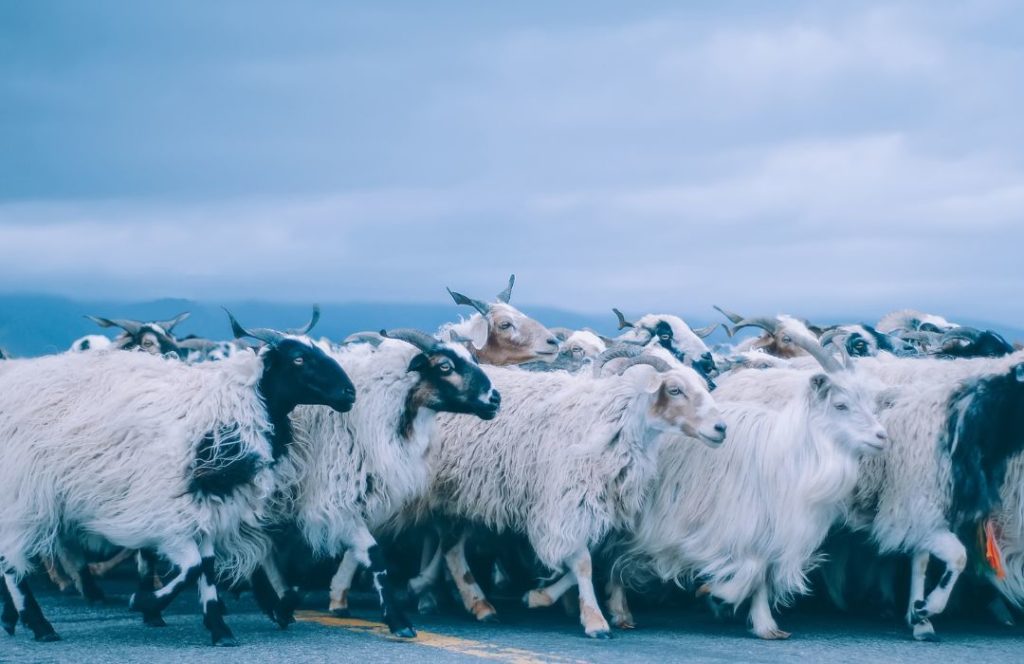
Cashmere is derived from the fine undercoat of the Changthangi goat, which thrives in the harsh, high-altitude regions of the Himalayas, particularly in Kashmir. The extreme climate and the scarcity of these goats make Cashmere a rare and precious fiber. The limited geographic region where these goats can be found contributes to the exclusivity of Pashmina.
Exceptional Softness
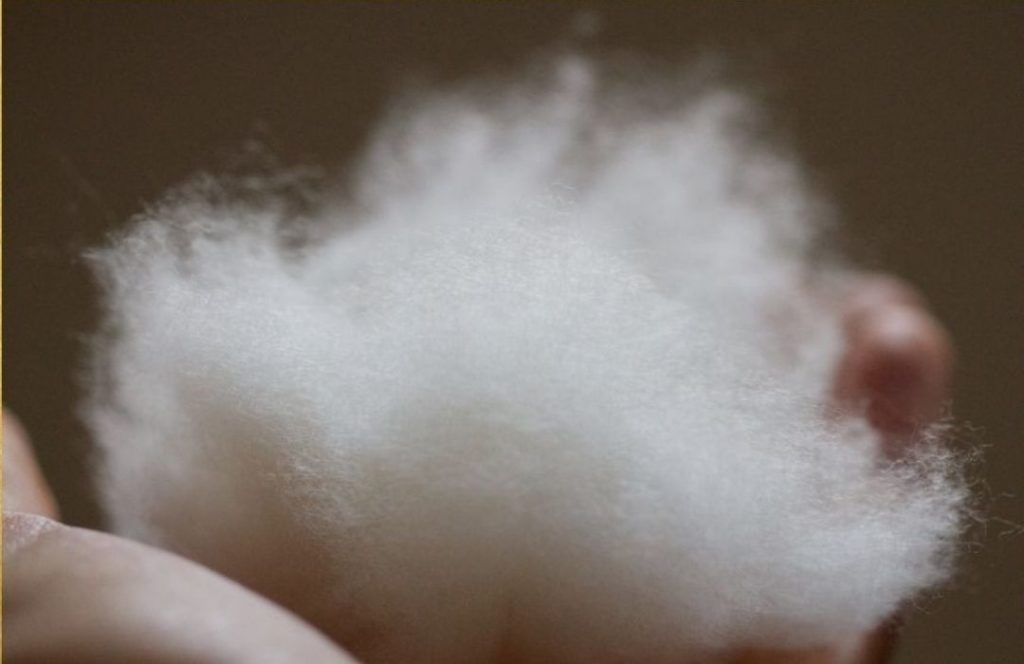
Cashmere is renowned for its unmatched softness and luxurious feel. The fibers are incredibly fine, measuring about 12-15 microns in diameter, making them finer than human hair. This results in a fabric that feels gentle and sumptuous against the skin, creating an unparalleled sensory experience.
Lightweight and Warmth
Despite its fine texture, Pashmina is remarkably warm. The unique climate of the Himalayan region prompts the goats to develop a dense, insulating undercoat to survive the harsh winters. This natural insulation is retained in Cashmere fabric, providing exceptional warmth without the weight commonly associated with other fibers.
Versatility in Fashion
Pashmina's versatility extends beyond its practical warmth. The fiber is highly adaptable to various weaving techniques, allowing for a range of styles and designs. From intricately handwoven shawls to lightweight scarves, Pashmina products cater to diverse fashion preferences. The ability to blend traditional craftsmanship with contemporary designs enhances its appeal across cultures and generations.
Cultural Significance
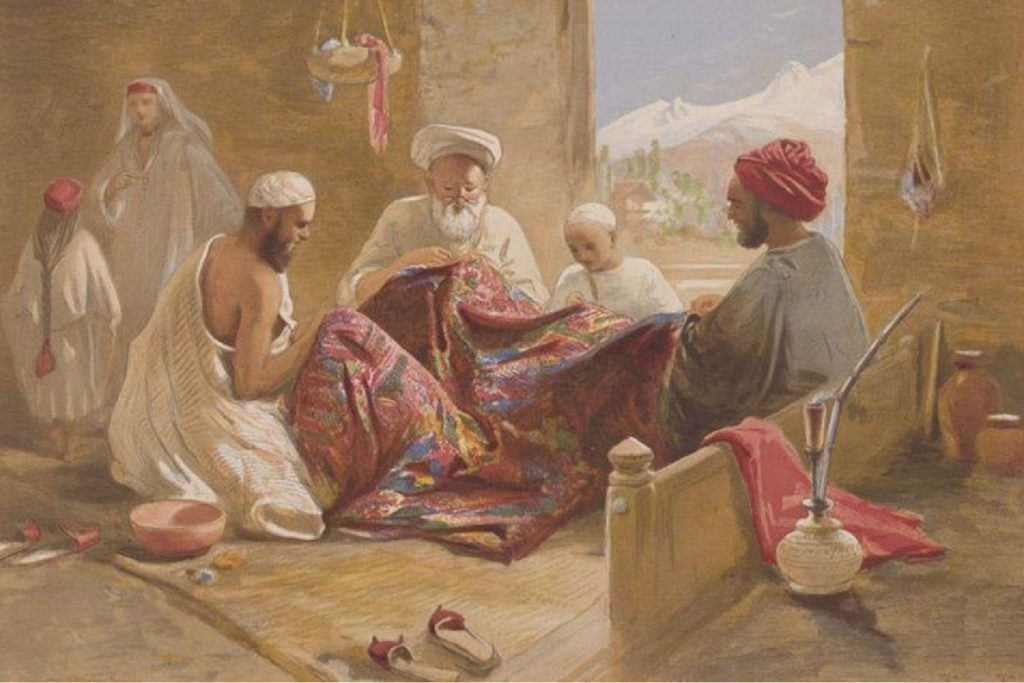
Pashmina holds profound cultural significance, particularly in regions like Kashmir. The craftsmanship involved in transforming raw Cashmere into exquisite garments is a traditional art passed down through generations. The fabric is deeply ingrained in the cultural heritage of these areas, representing skill, artistry, and a connection to the rich history of the region.
Timeless Appeal
Pashmina possesses a timeless quality that transcends fashion trends. The elegance and sophistication it exudes make it a perennial favorite among those who appreciate enduring style. Pashmina products, when cared for properly, can last for generations, becoming cherished heirlooms passed down within families.
Ethical and Sustainable
Pashmina production is generally considered more sustainable than some synthetic alternatives. The Changthangi goats are raised in a natural environment, and traditional herding practices contribute to the ecological balance of the Himalayan region. Additionally, the longevity of Pashmina products aligns with the principles of sustainability, as they are built to withstand the test of time.
Pashmina in Traditional Styles
In the heart of the Himalayas, particularly in the enchanting region of Kashmir, Pashmina unfolds as a canvas of unparalleled elegance. The traditional styles woven into the fabric of Kashmiri culture speak volumes about the meticulous craftsmanship as well as the cultural significance of this exquisite material.
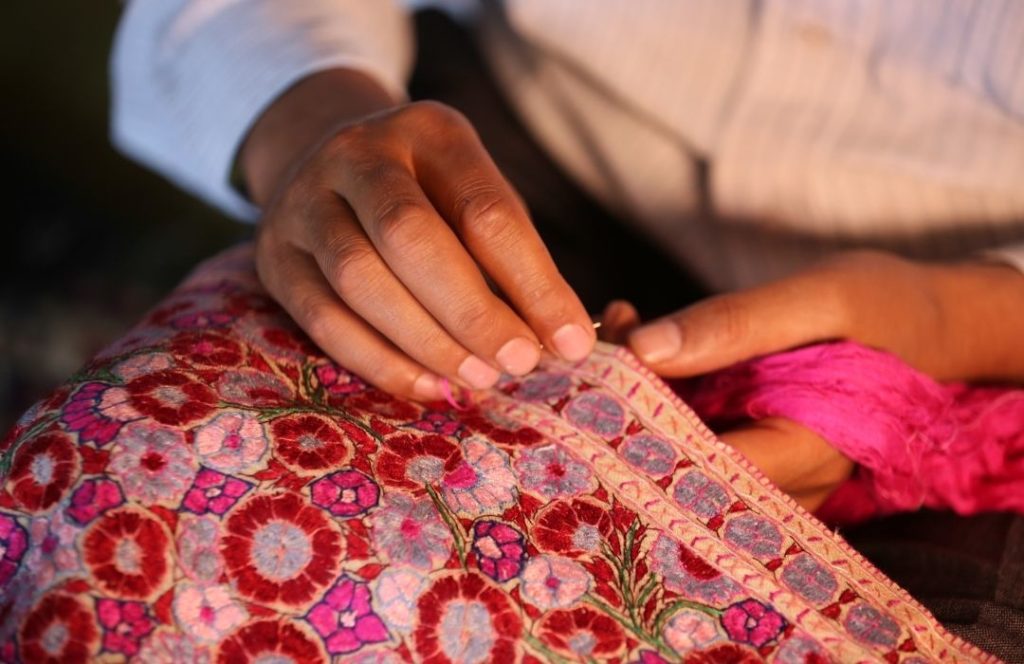
The craftsmanship of Pashmina in Kashmir is an art. It has been passed down through generations, with skilled artisans wielding delicate needles and looms. The intricate patterns, often inspired by the mesmerizing landscapes that surround them, tell stories of the artisans' connection to their homeland. The fine embroidery, known as "Sozni," adds a touch of ethereal beauty to the fabric. Its fine colourful threads make each Pashmina piece a work of art. The cultural significance of Pashmina in Kashmir goes beyond its physical warmth. It is, in fact, an emblem of status, a symbol of heritage, and a connection to the rich history of the region.
Mongolian Nomads
Venturing into the vast expanses of Mongolia, a land of nomads and sweeping steppes, we find Pashmina. It has seamlessly integrated into traditional clothing. The nomadic lifestyle, shaped by the harsh climate, has given rise to clothing that is not only practical but also deeply rooted in cultural symbolism.
Mongolian Cashmere, often sourced from the Hircus goats that graze in the high altitudes, is a nod to the nomads' resilience. The fabric's natural warmth and softness provide comfort in the face of the biting cold of the Mongolian winter. The traditional patterns and colors of Mongolian Cashmere reflect the cultural nuances of the nomadic tribes. Further, it tells the tales of their history, spirituality, and connection to the land. Each piece is a testament to the nomads' harmonious coexistence with nature. And Pashmina becomes a second skin in the boundless landscapes of this region.
Scottish Heritage
We now cross continents to the rugged terrains of Scotland. Here, we witness Pashmina finding a home in the intricate world of tartans and Scottish textiles. The integration of Pashmina aligns with the rich heritage of Scottish design traditions, adding a layer of luxury to the iconic patterns.
Pashmina, with its delicate texture, complements the robust and earthy tones of traditional Scottish tartans. Whether worn as scarves, shawls, or incorporated into garments, Pashmina indeed brings a touch of sophistication to the rugged charm of Scottish heritage. The fabric's ability to adapt to various weaving techniques as well as its affinity for vibrant dyes, make it a versatile addition to the Scottish textile landscape. In the weft and weave of tartans, Pashmina threads intertwine with the threads of history. Hence, they creating a tapestry that bridges the gap between tradition and modern luxury.
In these diverse traditional styles, Pashmina truly becomes a cultural ambassador. Further, it seamlessly weaves itself into the fabric of Himalayan, Mongolian, and Scottish heritage, embodying the spirit of craftsmanship and storytelling unique to each culture
Modern Influences
In contemporary haute couture, designers have redefined the allure of Pashmina by seamlessly integrating it into their collections. Pashmina, with its unparalleled softness and luxurious feel, has become a symbol of opulence on the runway. So, fashion visionaries have creatively incorporated Pashmina into haute couture pieces, including flowing gowns, tailored suits, and chic accessories. Whether used for its exquisite drapery or as an embellishment, Pashmina's versatility lends itself to haute couture's demand for sophistication. Designers worldwide have recognized and celebrated the timeless elegance of Pashmina, hence showcasing its adaptability to the ever-evolving landscape of high fashion.
Italian Elegance
In the realm of fashion, Italy stands as a paragon of elegance and innovation. The modern interpretation of Pashmina in Italian haute couture is a testament to the seamless blend of tradition as well as contemporary aesthetics. Italian designers have skillfully integrated Pashmina into their creations, thus elevating the fabric to new heights of sophistication.
Pashmina, with its luxurious texture and versatility, has found a place of honor in Italian fashion houses. Renowned designers have embraced this fine material, incorporating it into exquisite garments, scarves, and accessories. The softness of Pashmina complements the luxurious standards set by Italian couture. Thus it adds a touch of refinement to both casual and formal wear. Whether draped over shoulders or woven into the fabric of a gown, Pashmina brings an ethereal quality to Italian designs, hence creating a harmonious fusion of Eastern allure and Western sophistication.
Italian elegance, deeply rooted in a rich cultural history of art and craftsmanship, indeed finds resonance with the time-honored artistry of Pashmina. The collaboration of Italian designers with the traditional craftsmanship of Pashmina artisans results in fashion pieces that transcend trends. Moreover, these become timeless expressions of style and grace.
Global Fusion:

The allure of Pashmina has transcended geographical boundaries, hence becoming a global fashion phenomenon that influences designers worldwide. The modern fashion landscape is a melting pot of diverse influences. So Pashmina, with its rich cultural history, has become a wellspring of inspiration for designers seeking to create fusion pieces that bridge the gap between tradition and modernity.
Designers globally are drawn to the intricate patterns, vibrant colors, and luxurious feel of Pashmina. Runways showcase a tapestry of styles where traditional Pashmina motifs meet contemporary silhouettes. Whether it's a Pashmina-lined coat, a fusion of Pashmina and other fabrics, or innovative draping techniques, the global fashion scene is alive with the creative possibilities offered by this versatile material.
Pashmina's journey from the mountainous terrains of the Himalayas to the runways of major fashion capitals reflects its adaptability and enduring appeal. As designers continue to explore the boundaries of creativity, Pashmina remains a source of inspiration. Simultaneously, it keeps contributing to the ever-evolving narrative of global fashion.
Sustainability and Ethical Practices:
Amid the glamour of the fashion industry, the Pashmina sector grapples with sustainability challenges that demand attention. As the demand for this luxurious fiber grows, ethical practices and environmental concerns come to the forefront of industry discussions.
One of the primary challenges is the environmental impact of Pashmina production, particularly the grazing practices of the Changthangi goats. Sustainable initiatives are emerging to address these concerns, focusing on responsible grazing management and conservation efforts. Ethical practices also extend to the welfare of the herders and artisans involved in the Pashmina supply chain. These practices ensure fair wages and safe working conditions.
The Pashmina industry is at a crossroads. There is a growing awareness of the need for sustainable and ethical practices. As consumers become more conscious of the environmental and social impact of their purchases, the industry is adapting, exploring innovative solutions to strike a balance between preserving the rich heritage of Pashmina and ensuring a sustainable and ethical future.
Pashmina in Contemporary Fashion
Recent runway trends have seen a captivating fusion of traditional Pashmina styles with modern design aesthetics, showcasing the fabric's versatility and timelessness. Contemporary designers have embarked on a journey to reimagine Pashmina, infusing it with innovative elements that appeal to the sensibilities of modern audiences.
Runway Trends
On the runways, Pashmina has been celebrated for its luxurious texture and the intricate craftsmanship associated with traditional styles. Designers have taken inspiration from classic Pashmina weaves, incorporating them into contemporary silhouettes that resonate with the fashion preferences of today's consumers. Traditional Pashmina coats, once associated with heritage styles, have undergone a modern makeover, featuring sleek cuts, bold patterns, and unexpected color combinations.
Layering has been a key theme in recent runway presentations, with designers experimenting with Pashmina in unexpected ways. Oversized Pashmina scarves draped over tailored suits, asymmetrical Pashmina wraps paired with evening gowns, and even Pashmina-infused accessories like gloves and hats have graced the catwalks. This blending of traditional warmth and modern flair has garnered attention for its ability to seamlessly bridge the gap between heritage and contemporary fashion.
Contemporary designers have also explored the interplay of textures, combining Pashmina with unconventional materials to create visually stunning ensembles. The juxtaposition of Pashmina against leather, silk, or even metallic fabrics has added a dynamic dimension to recent runway collections. This experimental approach not only showcases Pashmina's adaptability but also positions it as a versatile element in the ever-evolving landscape of high fashion.
As fashion continually evolves, Pashmina remains a constant, with designers pushing the boundaries of creativity to breathe new life into this timeless fabric. The runway trends featuring Pashmina reflect a celebration of heritage, craftsmanship, and innovation, ensuring that this luxurious material continues to capture the imagination of modern audiences while paying homage to its rich cultural legacy.
Celebrity Influences
The allure of Pashmina has transcended cultural boundaries and found a dedicated following among celebrities, making significant waves in the realm of fashion. A myriad of instances showcases how Pashmina has become a coveted choice for influential figures, contributing to its heightened popularity in contemporary fashion.
Prominent celebrities, known for their discerning taste and influence, have frequently adorned Pashmina in various public appearances and events. Red carpets have witnessed the graceful draping of Pashmina shawls over the shoulders of A-list celebrities, adding an element of sophistication to their ensembles. Renowned fashion icons, such as Hollywood actresses and international musicians, have embraced Pashmina as a symbol of luxury and refinement.
Also read: 15 BOLLYWOOD CELEBRITIES WHO ROCKED THEIR LOOKS WITH A PASHMINA SHAWL
Effect of Celebrities on Pashmina
The impact of celebrity culture on Pashmina's popularity is undeniable. When a well-known personality incorporates Pashmina into their fashion repertoire, it instantly garners attention and sets trends for the broader audience. Social media platforms amplify this influence, with fans eager to replicate the style of their favorite stars. The association of Pashmina with celebrity fashion has led to a surge in demand, as consumers aspire to capture the elegance and glamour associated with these influential figures.
Beyond red-carpet appearances, celebrities have been spotted in everyday settings, effortlessly integrating Pashmina into their casual wear. Whether it's a cozy Pashmina wrap for a coffee run or an oversized scarf draped over travel attire, celebrities have elevated Pashmina to a versatile and must-have accessory.
The endorsement of Pashmina by celebrities not only propels it into the spotlight but also emphasizes its timeless appeal. As these influential figures continue to showcase the versatility of Pashmina in different settings and styles, it reinforces the idea that this luxurious fabric is not confined to traditional or formal occasions but can seamlessly integrate into everyday, contemporary fashion. In essence, celebrity influences play a pivotal role in shaping the narrative around Pashmina, turning it into a global fashion phenomenon that transcends cultural and geographical boundaries.
Also read: CASHMERE WRAP | CELEBRITIES WHO WORE CASHMERE
Traditional vs Modern Pashmina
The world of Pashmina encompasses a rich tapestry of traditional and modern designs. Each reflects the cultural heritage and contemporary sensibilities of its time. Here's a comparison between traditional Pashmina varieties, such as Kani and embroidered styles, and modern design interpretations, including solid colors, abstract prints, patterns, and Swarovski-studded creations:
Traditional Pashmina
Kani Pashmina:
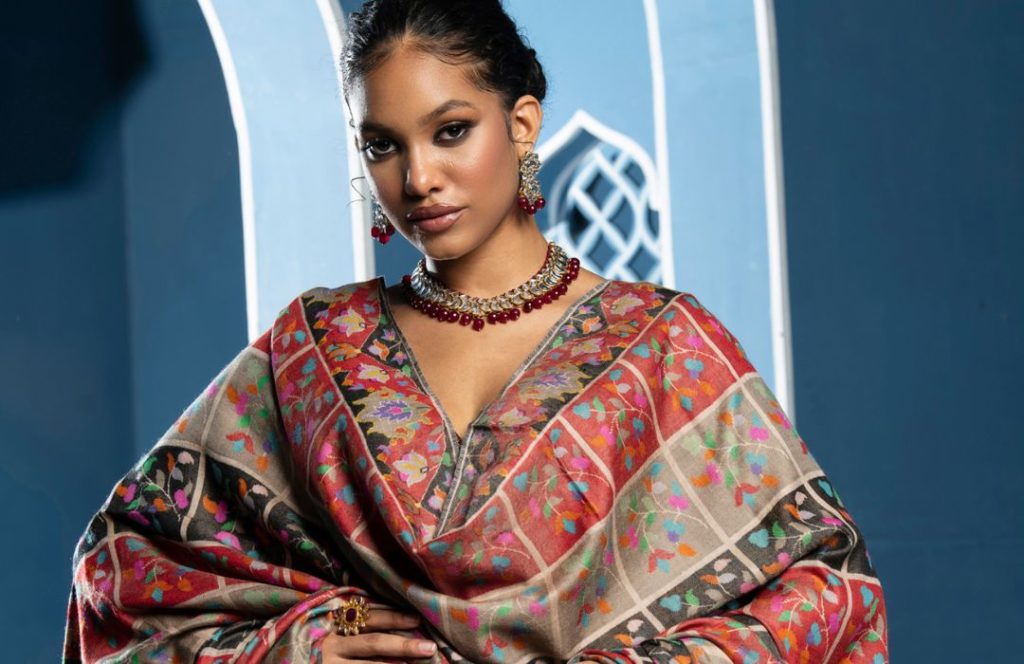
Craftsmanship: Kani Pashmina is a masterpiece of meticulous craftsmanship. It involves a painstaking weaving technique where artisans weave each thread individually using small bamboo sticks called kanis.
Design: Kani shawls often feature intricate and elaborate patterns inspired by nature, landscapes, or historical motifs. The designs are a result of the meticulous arrangement of colorful threads during the weaving process.
Time-Intensive: The creation of Kani Pashmina is a time-intensive process, and a single shawl can take several months to complete.
Embroidered Pashmina:
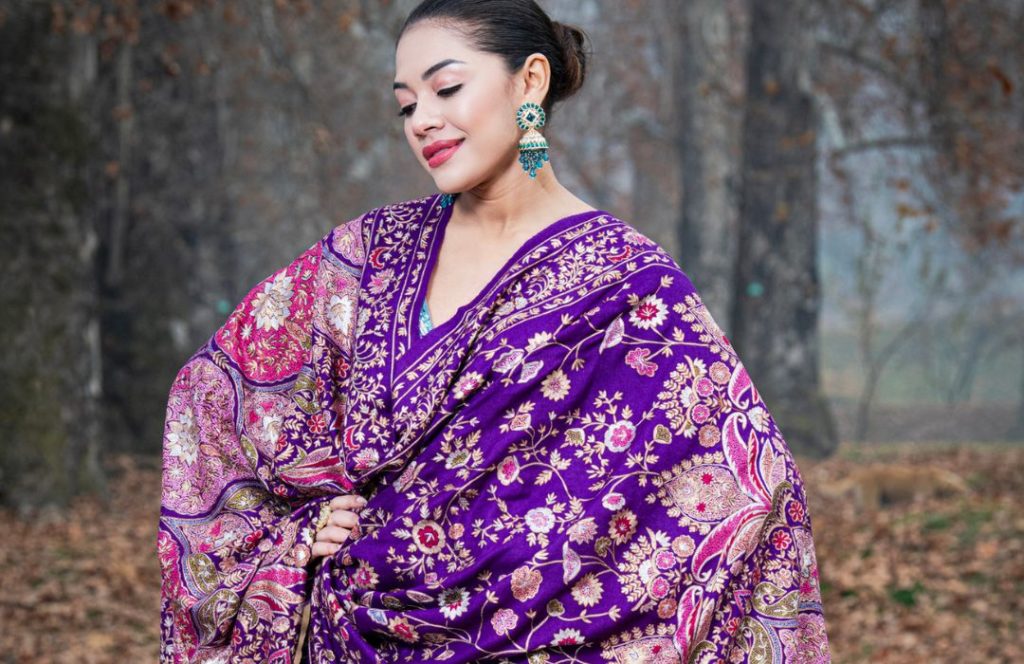
Hand Embroidery: Traditional embroidered Pashmina involves intricate hand embroidery. Hence, skilled artisans embellish the fabric with delicate patterns using a variety of stitches.
Themes: Embroidery often depicts traditional motifs, floral patterns, or historical designs. The embroidery thread can be silk, wool, or even sometimes threads of real gold or silver.
Luxurious Detailing: Embroidered Pashmina pieces are famous for their luxurious detailing, adding a touch of opulence to the finished product.
Also read: PASHMINA SHAWLS AS WEDDING FAVORS
Modern Design Pashmina
Solid Colors:
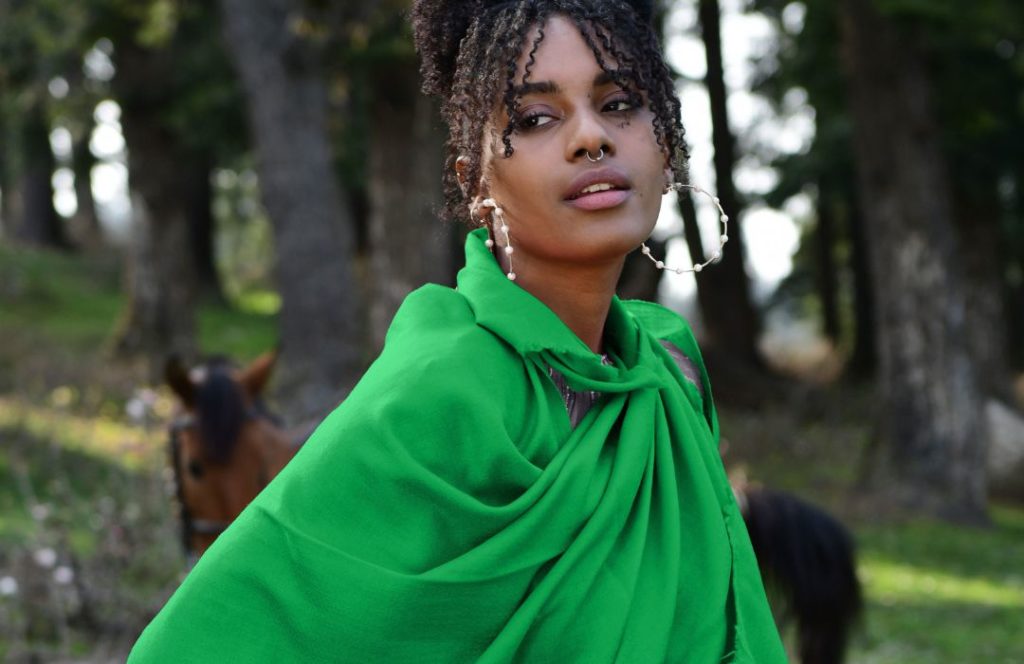
Minimalistic Aesthetic: Modern Pashmina designs often embrace a minimalistic aesthetic, focusing on the beauty of solid colors. This simplicity allows the natural texture and softness of the Pashmina fiber to shine.
Versatility: Solid-colored Pashmina products are versatile. Hence, they can easily complement a wide range of outfits, making them a staple in contemporary wardrobes.
Abstract Prints and Patterns:
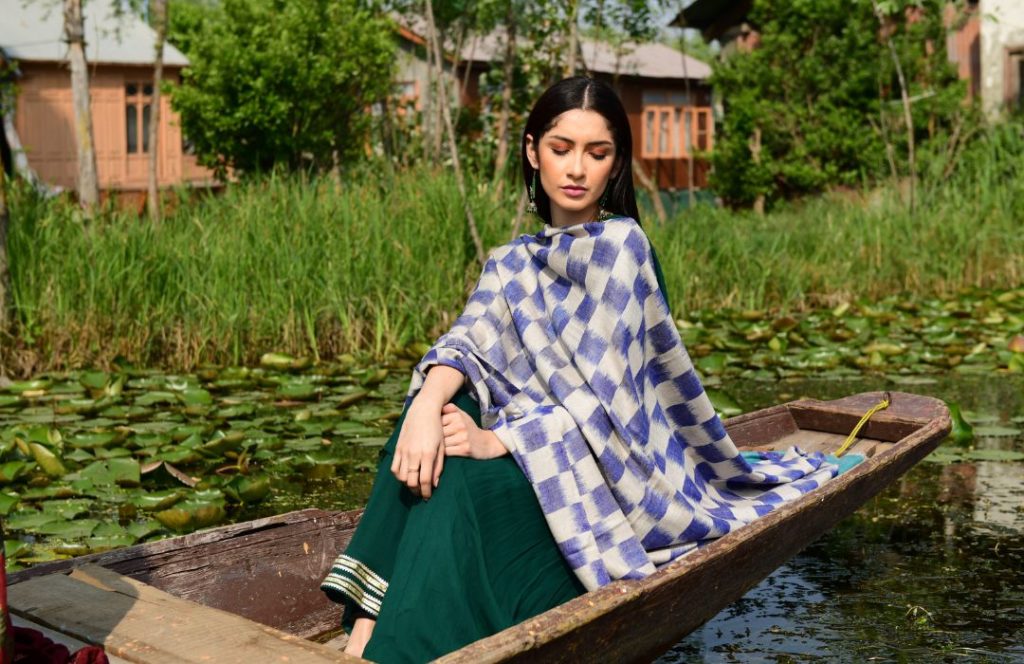
Contemporary Artistry: Modern Pashmina designs may feature abstract prints and patterns inspired by contemporary art and design trends.
Expression of Individuality: These designs allow for a more personal expression of style. Hence they appeal to those who seek unique and avant-garde fashion statements.
Swarovski-Studded Pashmina:
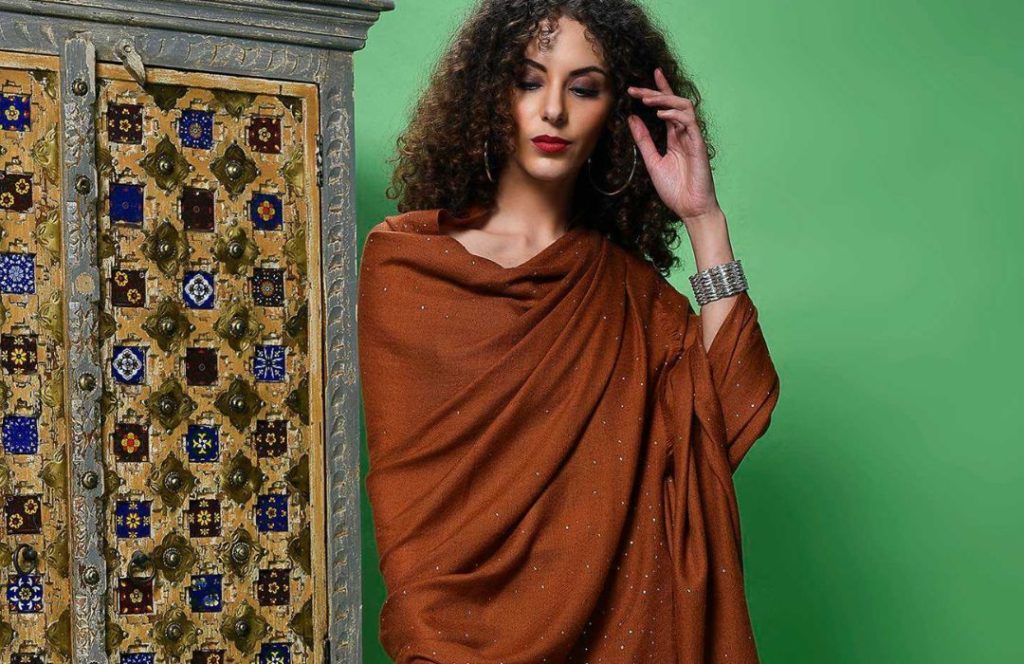
Luxury Embellishments: Swarovski-studded Pashmina incorporates crystals for added luxury and glamour. Artisans carefully and manually apply these crystals to the fabric.
Evening Wear: Swarovski-studded Pashmina pieces are often associated with evening wear, adding a touch of sparkle to special occasions.
Also read: PEACH PERFECTION: EMBRACING PANTONE'S COLOR OF THE YEAR WITH CASHMERE WRAPS
Conclusion
In tracing the rich tapestry of Pashmina's journey across cultures, we've explored the dual narrative of its traditional roots and modern influences. From the Himalayan elegance of Kashmir to the nomadic grace of Mongolian nomads, and the Scottish embrace in tartans, Pashmina has indeed etched its presence in diverse cultural landscapes.
The traditional styles, deeply embedded in craftsmanship and cultural nuances, showcase Pashmina as not just a fabric but a living heritage. From the regal weaves of Kashmir to the nomadic patterns of Mongolia and the vibrant tartans of Scotland, Pashmina resonates with centuries of artistry.
On the flip side, our exploration of modern influences reveals how Pashmina has seamlessly integrated into the global fashion landscape. In Italy, it graces haute couture, embodying elegance and sophistication. The fusion of traditional styles with contemporary fashion trends showcases Pashmina's adaptability. It further ensures its relevance in the ever-evolving world of design.
As we navigate the sustainability challenges, ethical practices, and the delicate balance between tradition and modernity, a fact becomes evident. Pashmina is not just a fabric but a symbol of resilience and adaptability. The fashion industry's commitment to sustainability aligns with the values embedded in Pashmina's cultural heritage. Further, this ensures a harmonious blend of tradition and contemporary consciousness.
In conclusion, Pashmina stands as a testament to the enduring significance of cultural symbols in the ever-changing landscape of fashion. Its timeless appeal, bridging tradition and modernity, beckons us to appreciate the intricate stories woven into each fiber. Pashmina isn't just a fabric; it's a journey through cultures, a celebration of diversity, and an invitation to cherish the threads that connect us all.